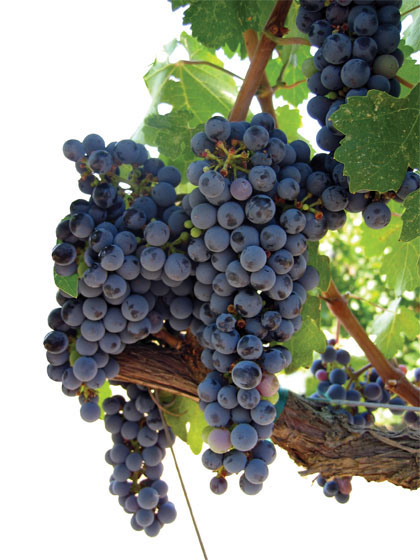A look at the always evolving red wine grape variety
by Ertan Sener
When one says Malbec, the word conjures thoughts of wine associated with the tango and asado. But, before Malbec learned to dance in Argentina, its ballroom was actually in the Southwest of France. One might have to be reminded that Malbec is one of the five blending grapes of Bordeaux, along with Cabernet Sauvignon, Merlot, Cabernet Franc and Petit Verdot. It was the predominant grape of these blends, but lost its dominance in Bordeaux after the phylloxera outbreak of the late 1800s and the horrid frosts of 1956. In the French region of Cahors, it goes by the name Côt. At one time Malbec was grown in 30 departments of France, with a list of several thousand synonyms long! Today, Argentina has the largest planting of Malbec grapes in the world, over 50,000 acres! Let’s see how Malbec made its way to find this happy home in South America.
Malbec found the new soils of Mendoza, Argentina around 1860 and today contributes for over 60% of the total wine production of Argentina. Malbec took to the young alluvial soils of Mendoza, which is only about one million years old. There are two major problems with growing conditions of Mendoza: lack of rain and hail. Total rainfall in Mendoza is under eight inches a year. This means all wineries in Mendoza have to use irrigation to water and train the roots of the vines. The ground needs to be saturated to get the roots to travel over five feet deep, where the poor top soil becomes the moist soils of clay. This is where the roots are very happy. When precipitation does occur, it could take the form of hail. These freak hail storms have destroyed many total harvests for wine makers, which could be and have been devastating to the livelyhood of producers. In the early 21st century, netting systems became the ultimate, although very expensive, cure to the uncontrollable acts of Mother Nature. These were ‘no question’ reactions to the Argentines, for Malbec had become the emblem of Argentina and needed to be protected as well as celebrated. The rise of Malbec was well documented by The Southern Wine Group in a film written by Sky Pinnick titled “The Boom Varietal”, a fantastic in-depth look at the life of Malbec. I’ll use this film as the impetus to ask the question, can a grape variety be a fad?
Malbec came on the scene at a perfect time in the United States. Wine consumption was growing across the country, and wine drinkers were becoming more adventurous with their selection of types of wine. Merlot was losing its momentum as the ever popular go-to red table wine and became eclipsed by the new grape variety that ‘hopped’ on the scene, Shiraz. Americans were looking for inexpensive wine that was juicy and palatable, just a joy to drink.
When Malbec arrived, it had these attributes, but it had something else going for it, it was a hand-made wine. Around 1988, Argentina changed its philosophy regarding wine-making ideals. It moved from a mass production mentality to new ways of thinking toward wine technology and vineyard management. The wines made from Malbec became finer in quality and maintained their great value. The American market moved from Merlot to Shiraz to Malbec. Now around 70% of Malbec produced in Mendoza is sent to the United States. Malbec is truly the life-blood of Argentina. They consume and love their national grape variety and it is the very essence of Argentina as is Tango and Soccer.
If Malbec is a fad, then like all fads, the end will surely come. The production of Malbec in Argentina has attracted wine makers from around the world to participate in this boom. Spending their time and money, hoping that their Malbec will be the next one to be asked for by name. Malbec, with some producers, has increased in depth and darkness with the taste profile, as well as prices starting to sneak up around the $50 mark. A good value, Malbec is still readily available and there seems to be new labels being introduced to the market, still at a good pace. Many people still ask for Malbec by name and know they are going to get a red wine that won’t overwhelm and usually fit the bill for most or every guest. If Malbec can find it’s way into the hands and the glasses of the next generation of wine drinkers, it should continue to please as well as open one’s eyes to the world of wine. Malbec, to the Argentines is no way a fad, but something sacred. Even though one might think they have Malbec all figured out, Malbec, with its rich history, still holds this sort of magic. A magic that a grape, and a wine, singularly defined and unified a culture and a people. A once almost forgotten variety has been given a new life, now booming below the equator. Cheers!








